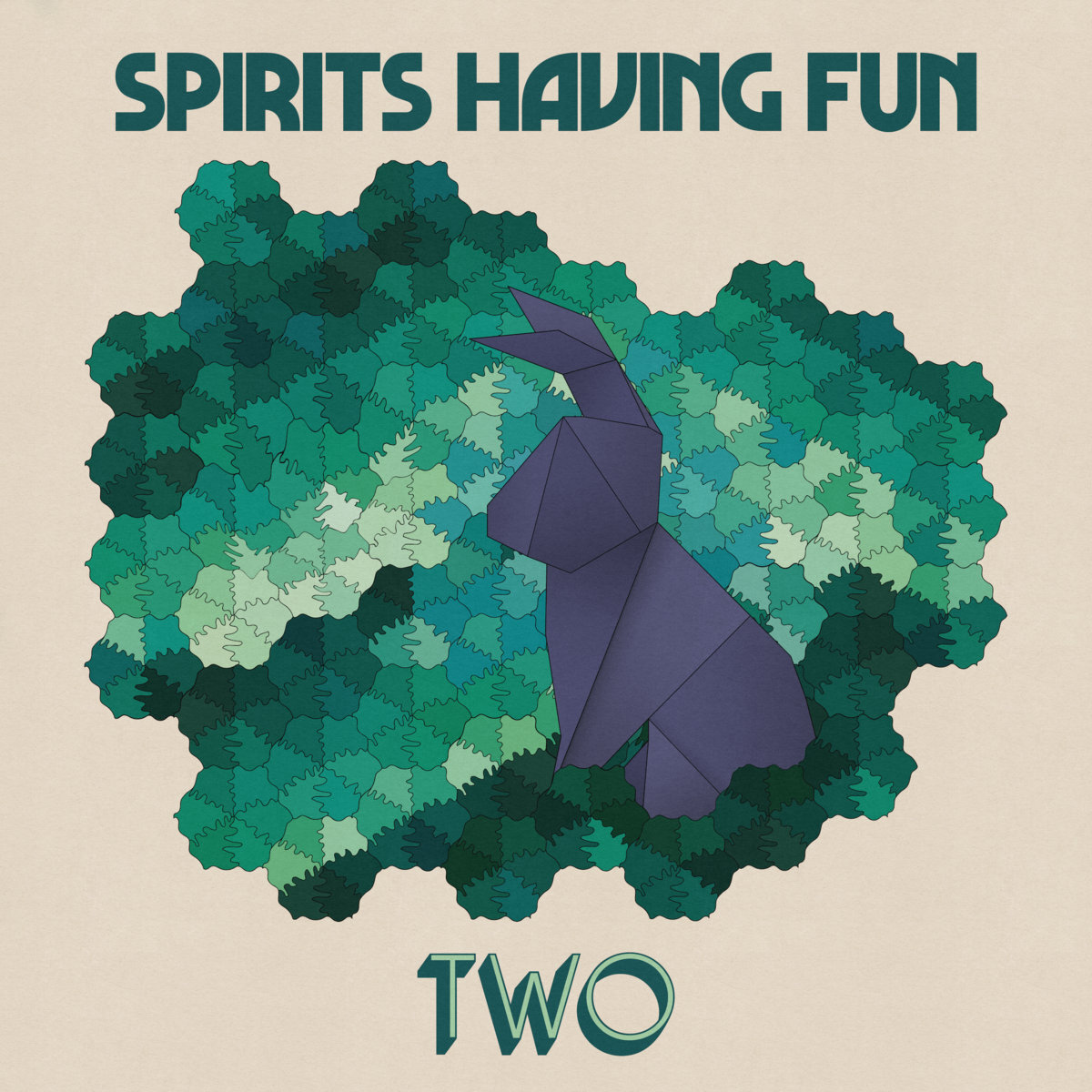by Delia Rainey (@hellodeliaaaaa)
The first time I saw Spirits Having Fun perform, it was pre-pandemic days, back when going to shows multiple nights a week had no consequence or anxiety of illness. At the no-more St. Louis venue Foam, where I’ve seen many beloved bands throughout the years, in that familiar room of exposed brick and windows covered in show fliers, Spirits Having Fun played and I danced with my friends. It’s simple, you know? The music and the performance leaked joy onto the audience, watching band members who were serious on their instruments but also not serious at all. Having fun is the name of the game, but so is redefining the cadence and range of where a song can go. When a band creates form-defying music, we can leave the forms of our bodies, too.
Spirits Having Fun’s sophomore album Two came out on the Chicago-based community-centered label Born Yesterday a month ago. The recordings feel as exciting as a live music experience, full of intricate surprises and clashing dynamics in their genre of experimental rock often detailed as “mathy” and “jazzy.” Spirits are literally split in two throughout the year -- guitarist-singer Katie McShane and bassist Jesse Heasley live in New York, and guitarist-singer Andrew Clinkman and drummer Phil Sudderberg live in Chicago. The four-piece utilizes the constraints of long-distance art-making (a now very pandemic experience) to create multi-layered unique sounds, weaving their different ideas into melodies and patterns that often feel like entering different colorful rooms of the same colorful house. The twelve song LP registers as equally cohesive and unexpected -- bouncing around the duality of smooth grooves into messier, rougher riffs. Although recorded in 2019 before any inkling of Covid quarantine, Two has that relatable feeling of friends excited to be together again, creating something new.
Two begins with Katie’s light high vocals, translating abstract experiences with nature. The whole album celebrates this desire to observe the outside world with our eyes, our bodies. Snarly bass lines and funky electric guitar blips transition into the album’s first single “Hold the Phone”. Within a steady jam, Katie’s vocal melodies twirl around and fuse onto instrumental parts. There’s a dichotomy of how such an in-sync arrangement can feel so dreamy and carefree -- “sun forever” or fun forever? As fragments run up and down the scale, a narrative of impatience and movement takes hold. The phone rings and the song ends in a sweet escapist place of harmonics zinging out and out, and we follow.
The next couple of songs continue the juxtaposing of bright vocals and improv-inspired sections of instruments in a natural mess. In a satisfying theme, Katie’s words continue to address the act of looking. Looking up at the sky, down at the ground, in the pure act of attention. The pacing of the songs imitates this theme of a wandering eye. In “See A Sky,” the guitar and singing repeat into each other, then releasing into a fun tease zone, then back wandering, until they hit one of the catchiest parts of the album, a call and response: Andrew: “The eyes” … Katie: “When I see a cloud / When I see a tree / When I see a dog.” There’s a clear shift with “Entropy Transfer Partners,” which is Andrew’s song: discussing marketplace plans, high rent, and the collective struggle to survive in a capitalist country (a country that doesn’t want us to survive.) Andrew’s powerful guitar verse could be a call-to-action in itself. “Entropy”’s solidarity lyrics, although seemingly opposite in thematic matter, connect to Katie’s contemplation on viewing nature. Both songwriting styles are rooted in the desire for other worlds, for possibility.
The last half of Two keeps up with the shifting of moods. As “Picture of a Person” feels like a patient-waltz on remembering, “Am There” wakes back up with playful guitar and vocals like thought bubbles: “everybody wants to drive a car - beep beep!” (Very Deerhoof.) “Long Walk In a Sunflower’s Shade” showcases a slow synth, buzzing against the vocal confessions. Two closes with the song “The Sweet Oak,” where the album cover gets its image: “I am a bunny I like to hide all my carrots in a row and watch them grow.” These “I am” statements are like conjuring a spell, leaving the album on another powerful organization of moving parts, but something feels unresolved. Reverb-y notes descend into a rabbit hole, and maybe there’s no other solution but to start the album again.

